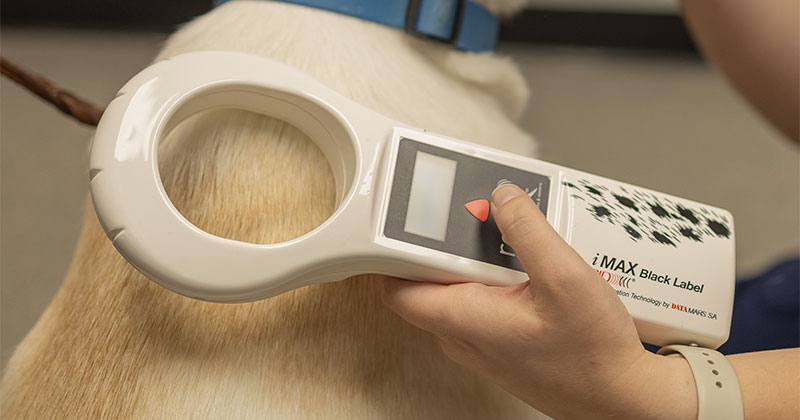
Imagine if your dog or cat got lost. You’d want to give them the best chance of getting home. With microchipping, you can.
Microchipping is a safe, permanent way to identify your pet in case they become lost. A microchip, which is a tiny device about the size and shape of a grain of rice, is placed just under the loose skin at the back of the neck. When a lost dog or cat without an ID tag is found, a handheld microchip scanner can be used to check for a chip. If the pet has one, it will transmit its ID number to the scanner via a low-frequency radio wave. The veterinary hospital or shelter then calls the chip manufacturer, retrieves the pet owner’s contact information, and calls the owner.
Even the most responsible pet owners can’t always guarantee their pet won’t get lost. A leash could break or slip out of your hand, a pet could push through a screen door or window, or a contractor or friend might accidentally leave a door or gate open.
We recommend that you use a microchip, along with a collar and ID tag, to identify your pet. An ID tag is still a reliable identification method. Pets that have tags with current contact information are more likely to not end up in shelters and tend to get home faster than those without tags. However, collars and ID tags aren’t permanent and can be removed (overnight or for grooming); pets can also lose them. With a microchip, your pet will have a much better chance of being identified and returned to you. Pets without microchips that end up in shelters may be adopted out to another family or even euthanized.
It’s essential to keep your contact information current in the microchip database. If you move or change phone numbers, update your details as soon as possible. Many microchip companies offer online management of your account, making it easy to ensure your information is always up to date.
Although we hope your pet never becomes lost, we want you to be prepared. Contact one of our network hospitals to schedule an appointment to microchip your pet. They can also suggest a plan to have in place so if your pet does go missing, you’ll be able to act quickly.
If you’d like to contact us, call us at (770) 526-9678 or request an appointment online.
Follow us on social media:




